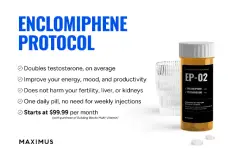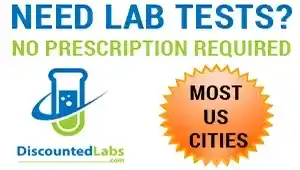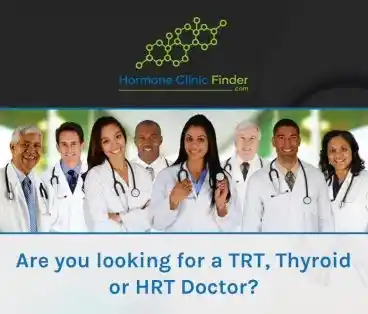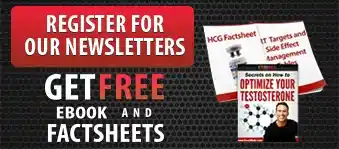14:55 Optimal Restoration of Spermatogenesis following Testosterone Therapy using hCG and FSH
️ Hosts:
Dr. Micah Hill | Dr. Pietro Bordalto | Dr. Eve Feinberg | Dr. Kate Devine
Views & Reviews
Featured Topics:
- Clinical Guidelines & Evidence-Based Practice
Editorial editor Robert Norman explores the role and development of clinical guidelines, with a standout contribution from Clarisa Garcia, ASRM Practice Committee Chair. - Classic Fertile Battle
A retrospective look at the use of ICSI for male factor infertility, featuring insights from Peter Schlegel. - Climate & Reproductive Health
Early data hint at connections between climate change and reproductive outcomes.
Turner Syndrome & Ovarian Tissue Cryopreservation (OTC)
Study Highlight:
Title: Puberty Progression in Girls with Turner Syndrome After Ovarian Tissue Cryopreservation
Authors: Sana Vonolen et al. (Netherlands)
Key Insights:
- OTC is increasingly used for girls with Turner Syndrome, despite limited long-term data.
- Study tracked 93 girls (ages 2–18) undergoing unilateral oophorectomy and OTC.
- Over a median of 3.5 years, pubertal development proceeded typically, suggesting no short-term harm from surgery.
- Noteworthy biomarker: Baseline AMH < 0.5 strongly predicted progression to POI.
- Interesting finding: Post-oophorectomy AMH levels initially dropped, then unexpectedly increased, possibly due to activation of the primordial follicle pool.
Clinical Takeaway:
For tertiary centers counseling Turner patients, early OTC with monitoring is feasible and not harmful in the short term, though long-term fertility outcomes remain uncertain.
Andrology Focus: Testosterone Therapy and Spermatogenesis
Study Highlight:
Authors: Dr. Blair Stocks & Dr. Larry Lipshultz (Baylor College of Medicine)
Key Points:
- Retrospective study of 77 men with low sperm concentration after exogenous testosterone use.
- All were treated with standardized hCG + FSH regimen ("reboot").
- About 74% had improved sperm counts, even when 27 of them continued testosterone during treatment.
- No significant differences between those who continued vs. discontinued testosterone, suggesting that short-term continuation may not impede spermatogenic recovery.
Caveats:
- 30% of azoospermic men failed to recover sperm, raising concerns.
- Real-world costs of branded medications (~$4,000/month) may limit access.
- More rigorous RCTs and fertility outcome data needed before clinical practice change.
Clinical Implication:
For men unable to discontinue testosterone, concurrent gonadotropin therapy shows promise—but proceed with caution due to small sample size and mixed expert opinion.
Embryology & Time-Lapse Imaging: Segmental Aneuploidy
Study Highlight:
Title: Human Embryos with Segmental Aneuploidies Display Delayed Early Development
Authors: Fig Luzi et al. (Multi-center European collaboration)
Summary:
- Over 7,000 embryos analyzed across three centers.
- Segmental aneuploid embryos developed slower in early cleavage stages but caught up by blastocyst.
- Predictive models using time-lapse data had poor accuracy:
- AUCs ranged from 0.56–0.74 in training, but worsened in validation.
- Segmental prediction less reliable than for full chromosomal aneuploidies.
Editorial Take:
Time-lapse imaging remains a valuable research tool, but its clinical utility in selecting euploid embryos is unproven. Variability across centers and algorithms limits generalizability.
Epidemiology Spotlight: ART & Neurodevelopment
Study Highlight:
Title: Neurodevelopmental or Behavioral Disorders in ART-Conceived Children
Authors: Patricia Angel et al. (Denmark)
Methodology:
- Nationwide cohort: 58,000 ART-conceived vs. 1.2 million spontaneously conceived children.
- Outcome: Use of neuropsychiatric medications by age 7.
- Slight increase in medication use among ART children, especially those conceived via ICSI.
Critical Sensitivity Analyses:
- Adjusting for birthweight and prematurity nullified significance.
- Sibling analysis revealed medication use patterns mirrored across siblings, regardless of ART status.
Conclusion:
When accounting for confounders, ART was not independently linked to neurodevelopmental medication use. Parental awareness may influence treatment-seeking behaviors.
Gynecology Feature: Estetrol + Drospirenone for Dysmenorrhea
Study Highlight:
Title: Efficacy of Estetrol/Drospirenone for Dysmenorrhea: A Randomized Trial
Country: Japan
Key Points:
- E4 is a unique estrogen produced in the fetal liver with selective receptor activity.
- Compared to placebo, E4 + drospirenone significantly reduced dysmenorrhea severity over 4 months.
- No thromboembolic events observed during the trial.
Editorial Note:
While more trials comparing it to existing hormonal therapies are needed, E4-based therapies are a promising alternative for managing cycle-related pain.
Research Letters Roundup
1.
- Small RCT (n=108) in France comparing spontaneous LH surge vs. hCG-triggered modified cycles.
- Similar pregnancy outcomes, but hCG-triggered cycles offered easier scheduling and fewer monitoring visits.
- Caution: Many “natural” cycle patients surged early, undermining randomization and limiting conclusions.
2.
- Compared live birth costs between Clomid, Letrozole, and Gonadotropins.
- Gonadotropin cycles were ~$7,000 more expensive for singleton births.
- High-order multiples (only seen in gonadotropins): $550,000 per live birth.
- Companion Reflections piece by Dr. Jesse White underscores the importance of rigorous cost modeling.
Takeaway:
Gonadotropins offer no added benefit in unexplained infertility but dramatically increase costs and risks.
Closing Thoughts & Upcoming Events
- Dr. Pietro Bordalto hosts an upcoming journal club in Portuguese.
- Dr. Eve Feinberg presents at the Best of ASRM & ESHRE.
- Drs. Hill & Devine host a live podcast and journal club at PCRS.
Stay tuned and subscribe to F&S On Air for your monthly dive into reproductive science!
Produced by Dr. Molly Kornfield and Dr. Adriana Wong, brought to you by the Fertility and Sterility family of journals and ASRM.
Key point here!
* Accordingly, one should not generalize our findings and propose that hCG/FSH therapy would benefit all infertile male patients.
The inherent limitation of our study is its retrospective nature without strict inclusion criteria, randomization, or patient monitoring (i.e., some data, such as hormone levels, are not completely captured). Specific limitations and selection biases also include the following: 1) exclusion of patients not undergoing a subsequent semen analysis after initial prescription of hCG/FSH therapy (n=102, potentially missing those patients unable to afford the high cost of hCG/FSH), 2) exclusion of patients without a documented history of testosterone use (n=39, raising the question of whether hCG/FSH therapy would benefit testosterone naïve infertile patients), and 3) exclusion of patients documented to be normospermic (>15 M/mL) despite being treated for infertility (n=8, highlighting whether gonadotropic therapy could improve not only sperm quantity but quality). Accordingly, one should not generalize our findings and propose that hCG/FSH therapy would benefit all infertile male patients.
Our study is also limited by its relatively short follow-up. Although the median time on hCG/FSH reboot to achieve the highest documented sperm concentration was 4.7 months, the upper quartile of therapy duration ranged from 8.7 to 29.4 months. Within this upper quartile, however, 73% of patients still demonstrated an improvement in their sperm concentrations vs. 74% of patients in the lower three quartiles. This raises the possibility that some patients may take longer to respond to hCG/FSH reboot therapy. Longer follow-up will be required to better understand this regimen’s safety and efficacy profile. Finally, we did not assess fertility outcomes in patients undergoing hCG/FSH reboot therapy as our IRB did not include calling patients for follow up. However, men with isolated hypogonadotropic hypogonadism treated with human Menopausal Gonadotropin ,a combination of urinary purified LH and FSH, can reliably achieve pregnancy despite having severe oligospermia or oligospermia(31). Thus, we posit that any improvement in sperm concentration secondary to hCG/FSH therapy represents a means to restore fertility in men with prior testosterone use.
Key to implementing standardized, guideline-based treatment protocols for the treatment of infertility secondary to testosterone use are prospective trials. To confirm these data, the authors are currently designing a multi-center, randomized, and controlled trial to assess hCG/FSH therapy in infertile men with prior testosterone use. Studies of importance should also include prospective trials comparing the efficacy of hCG monotherapy or hCG/Clomiphene to hCG/FSH, as well as the efficacy of hCG/FSH therapy in testosterone naïve patients(18).
Ultimately, the strength of this study is its size, representing the largest study to date investigating the utility of gonadotropic hCG/FSH therapy in restoring spermatogenesis in men with a history of testosterone use. Subjects followed a consistent medication regimen throughout the study, allowing appropriate analyses with semen analyses and hormonal testing at 3-month intervals. With hope of increased availability and reduced cost, hCG/FSH gonadotropic therapy may represent the optimal regimen for spermatogenic recovery in infertile men with a history of testosterone use
Last edited by a moderator:














